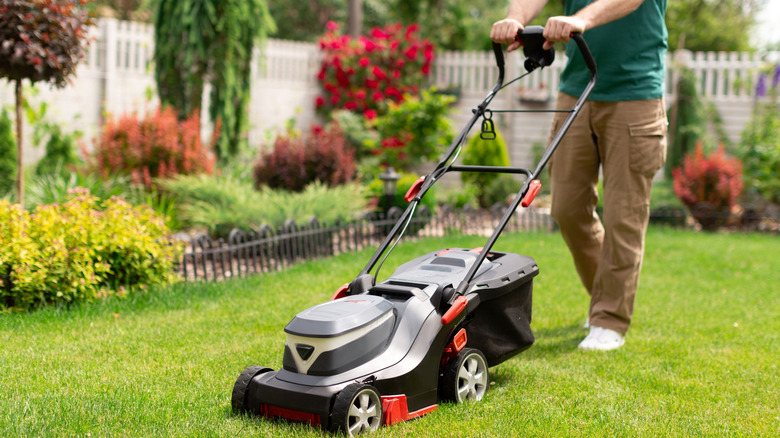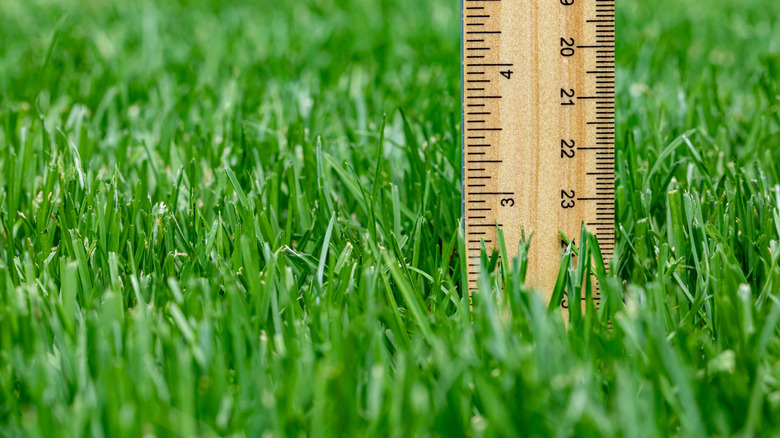The HGTV-Approved Way To Mow Your Lawn That Prevents Weeds From Growing
When it comes to the best methods for mowing your lawn more efficiently, cutting grass as short as possible to reduce mowing frequency is not one of them. In fact, trimming grass blades too short, which is often referred to as scalping a lawn, is actually one of the biggest mistakes people make when mowing. That's because this practice can seriously weaken your lawn cover while simultaneously making room for weeds to thrive.
Grass requires plenty of exposure to the sun in order to trigger photosynthesis, which helps it grow and remain healthy. The shorter the blades are, the more difficult it becomes for grass to go through this process, thus weakening it. What's more, short blades expose the soil underneath, allowing it to soak up the sunlight that the grass would have otherwise basked in. This gives weeds and crabgrass the energy they need to spread.
Luckily, there's a simple, HGTV-approved solution to this problem: raising your mower's cutting height. Ideally, you want to keep blades about 3 inches tall and follow the one-third rule while cutting to prevent weeds from growing and enjoy a lush lawn year-round.
The simple HGTV-approved mowing hack that changes everything
Plenty of us are guilty of mowing lawns way too short, but all hope is not lost. To keep weeds at bay and help grass thrive, start by letting the lawn grow back naturally. The key to a lush, green lawn is maintaining optimal blade height, and the right length to mow your lawn at is between 3 and 3.5 inches. However, you shouldn't cut more than the top third of the grass at any given time, so wait until blades are a bit over 4 inches before getting to work. If you don't mind a more natural-looking lawn, let the grass grow longer and mow only when it hits 6 inches, ensuring you remove just one-third.
Following these best practices will ensure grass can grow lush and green, that pesky weeds don't have room to thrive, and that grass roots grow deeper and stronger. A larger root system also means that your grass will be more drought and grub-tolerant. Another perk is that a lawn that is tall, well-watered, and fertilized may not require any pesticides at all. As for how often you should be cutting your lawn, it will depend on the season. In summer, grass may need trimming twice a week, while in winter, twice a month usually suffices.

